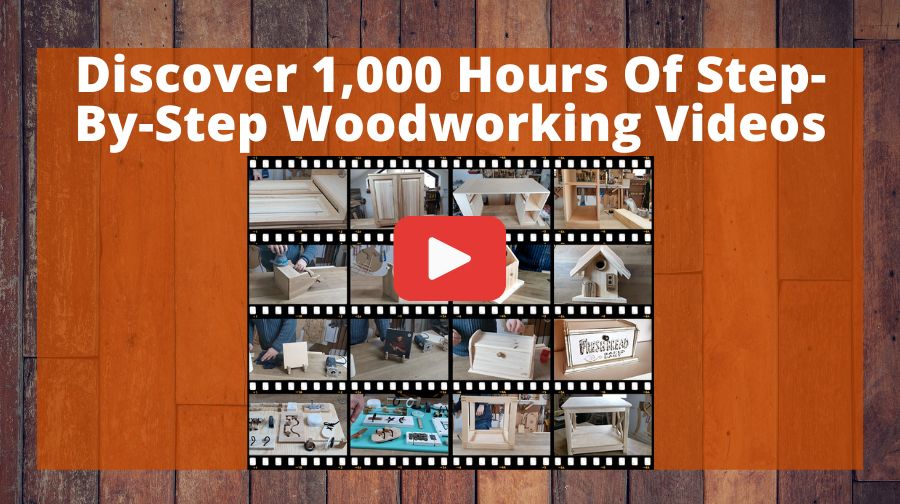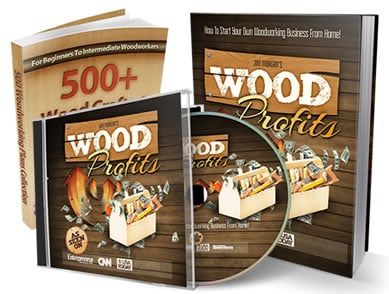Hey there, fellow woodworker extraordinaire! If you’ve got sawdust in your veins and a yearning to transform chunks of timber into tangible treasures, you’ve stumbled upon the right blog post, my friend. Picture this: your workshop, filled with the symphony of buzzing saws and the scent of freshly cut wood. Each stroke of your chisel is like a dance, shaping your vision into reality.
But here’s the kicker: what if I told you that these small woodworking projects, those humble creations that fit right in the palm of your hand, hold the power to fatten up your wallet? Yep, you heard it right. From nifty trinkets to rustic décor, we’ll explore the enchanting world of small-scale woodworking projects that sell like hotcakes.
So strap on your tool belt, grab a cup of joe, and let’s embark on this woodworking journey that’s bound to fill your pockets with the sweet sound of success.
Subscribe to Matthew Peech on YouTube
So, for today’s topic, Matthew is going to talk about the power of selling small items. These are basically inexpensive items that can be made quickly. Matthew means items that can be made for two or three bucks but has creative value and can be sold for twenty or thirty dollars. These sales can add up quickly, and you don’t need to create expensive items worth hundreds of dollars to make money.
Matthew wants to show you some of the things he has made over the years using scraps and cheap materials because he didn’t have a lot of money to spend. One popular item is wall art, which people are willing to spend money on as a decoration.
Matthew’s kids made wall art using scrap flooring, specifically tongue and groove scrap flooring. However, you can use any type of scrap wood you have, such as pallet wood. They sold these wall art pieces for twenty dollars each, and they sold a lot of them. They offered different designs, colors, and sizes to cater to different tastes.
Want To Improve Your Woodworking?
Discover 1,000 Hours Of Step-By-Step Woodworking Videos

It’s called Woodwork101. A database of detailed videos and blueprints in crystal clear, mouth-watering HD that will take you by the hand and show you that DIY home projects done the right way are easy, fun, and always of top quality… turning dream into reality in a heart-beat. Getting you that perfect build each and every time.
Matthew emphasizes the concept of “divergent” thinking throughout the video, which means thinking outside the box or going in a different direction.
He encourages viewers to develop the ability to look at something and figure out how to make money from it, to think of ideas that others might not see.
Matthew gives an example of finding old tin cans in an antique shop and transforming them into wall art by framing them. This kind of creative thinking allows him to sell these pieces for twenty dollars each.
Another example Matthew shares is using furring strips, which are cheap, as an alternative to expensive two-by-fours for his projects. He made a piece of wall decor using a two-inch furring strip and created an arrow design. It’s an inexpensive project that can be sold for around twenty dollars.
He also made arrows using three-inch furring strips, which cost only 40 cents per linear foot. By using affordable materials and thinking creatively, he can produce items that people want to buy.
Want To Start Your Own Etsy Store To Sell Your Projects? Learn How With 1 Free Month Of Skillshare

Click Here To Get 1 Free Month Of Skill Share
Join Etsy’s Parker Gard on Skill Share to learn the ins and outs of creating a successful e-commerce business within an online marketplace. Parker reveals insights from years working behind-the-scenes at Etsy so that you can take your business from dream to reality.
Matthew emphasizes the importance of smalls, especially when starting a business. Small, functional items like coasters and coat racks can sell well and bring in money quickly.
He gives an example of making coasters out of old four-by-fours, cutting them into three-quarter-inch pieces, and selling a set of six for 30 dollars. Functional items made from reclaimed or inexpensive materials are appealing to customers.
Matthew suggests thinking about what materials you have access to or can obtain at a reasonable price. He advises searching online platforms like Facebook Marketplace or Craigslist for reclaimed materials. Even if it’s not old, the grain and aesthetic appeal of the wood can make it desirable for customers.
By being resourceful and looking for opportunities to repurpose materials, you can create unique and marketable products.
Matthew concludes by encouraging viewers to constantly keep their minds open and visualize what they can do with what they see, have, or can acquire. He reminds them that they don’t always have to purchase materials from big stores and that thinking outside the box is essential. By making and selling small items, the income can start flowing while you work on larger projects.
The power of selling smalls lies in their ability to accumulate profits quickly. Matthew shares the advice of an antique dealer who told him that selling smalls can be more powerful than selling larger, more expensive items because people often come prepared to spend smaller amounts at shows and markets.
In summary, Matthew’s main message is to stay open-minded, be imaginative, and explore the possibilities of creating and selling small items. By doing so, you can generate income faster and build your business while also allowing room for larger projects.
[Video] 3 Most Common Mistakes
When Setting Up Shop

A woodworking friend of mine shared this video by Ralph Chapman with me that helped him set up his workshop.
The video explains the benefits of Ralph Chapman’s guide about setting up an affordable workshop and avoiding the most common mistakes offers to anyone interested in woodworking.
FAQ – Frequently Asked Questions
Q: Who is Matthew and what is his expertise?
A: Matthew is a skilled craftsman and entrepreneur who has extensive experience in woodworking and selling handmade products. He shares his knowledge and insights through videos and tutorials, guiding others in creating and selling their own small items for profit.
Q: What are “smalls” and why are they important?
A: “Smalls” refer to small-sized items that are crafted or repurposed using affordable materials. They are important because they can be produced quickly and at a low cost, allowing for a higher profit margin. Selling smalls is an effective strategy for generating income, especially when starting a business or building up funds for larger projects.
Q: How can I make money by selling smalls?
A: By being creative and resourceful, you can identify inexpensive materials or scraps that can be transformed into appealing and functional products. Consider making wall art, coasters, decorative items, or even repurposing old objects. By pricing your smalls competitively and marketing them effectively, you can attract customers and accumulate sales that add up over time.
Q: Do I need expensive materials and tools to make smalls?
A: No, expensive materials and tools are not necessary. Matthew emphasizes the importance of thinking outside the box and using what you have or can acquire at a reasonable price. He suggests searching for reclaimed or discounted materials through platforms like Facebook Marketplace or Craigslist. Additionally, utilizing affordable alternatives, such as furring strips instead of expensive lumber, can help keep costs down.
[Guide] How To Launch Your Woodworking Business For Under $1000
Click Here To View
If you’re considering turning your woodworking hobby into a part-time business check out this helpful guide on how to get started.
Q: How do I come up with ideas for smalls?
A: To generate ideas, Matthew advises developing a mindset of constantly seeking opportunities. Train yourself to think divergently, finding unique ways to use and repurpose materials. When observing objects or materials, consider their potential for transformation or how they can be combined to create something new and appealing. With practice, you’ll start seeing possibilities everywhere.
Q: Can I sell smalls online?
A: Yes, selling smalls online can be a lucrative venture. Platforms like craft fairs, Etsy, or even your own website can provide exposure to a wide customer base. By showcasing high-quality product images, providing accurate descriptions, and setting competitive prices, you can attract online shoppers and generate sales.
Q: How do smalls compare to selling larger items?
A: Small items have distinct advantages over larger pieces. While larger items may require more time and resources to create, smalls can be produced quickly and with minimal overhead costs. This allows for a higher turnover rate and faster accumulation of profits. Additionally, smalls cater to a broader market, as they are more affordable and make great impulse purchases.
Q: Can I make a sustainable income from selling smalls?
A: Yes, it is possible to generate a sustainable income by selling smalls. The key is to consistently create and sell a variety of products, focusing on those that have proven to be popular and profitable. By continually exploring new ideas, refining your craftsmanship, and effectively marketing your products, you can build a successful business centered around smalls.
Q: How can I learn more from Matthew?
A: Matthew shares his knowledge and experiences through videos and tutorials, which you can find on his YouTube channel or website. By subscribing to his channel and following his content, you can gain valuable insights, tips, and inspiration for creating and selling smalls.



